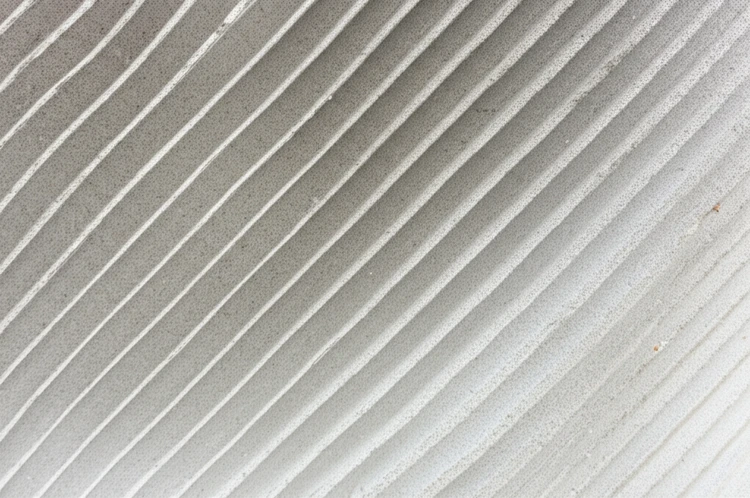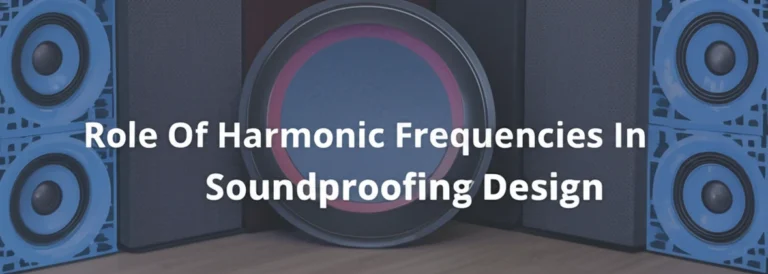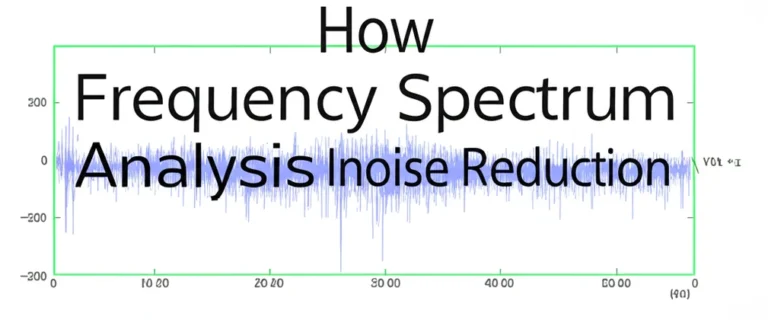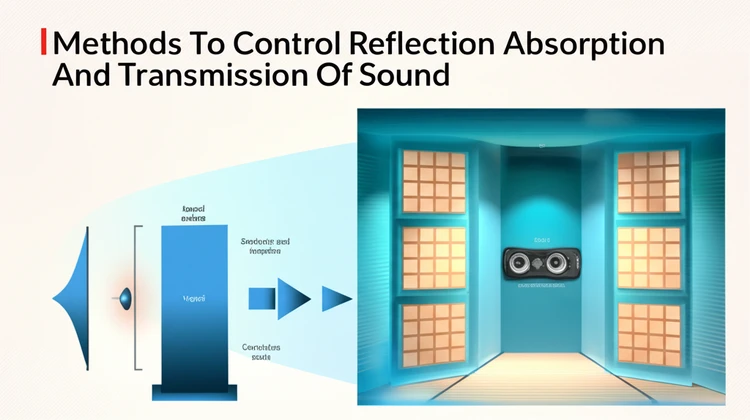
Effective techniques for sound energy dissipation in building materials are crucial for enhancing acoustic comfort and minimizing noise transmission in various environments. This article explores the science behind sound dissipation and delves into proven techniques and materials for creating quieter, more functional spaces.
Soundproofing isn’t simply about blocking noise; it’s about managing how sound behaves when it encounters different surfaces. Sound energy dissipation, the process of transforming sound waves into less intrusive energy forms like heat, is a crucial strategy for controlling noise in buildings.
This article provides an in-depth exploration of various techniques for sound energy dissipation in building materials, offering practical guidance for architects, builders, and homeowners alike.
What Is Sound Energy Dissipation?
Sound energy dissipation is the process of reducing the energy of sound waves as they interact with surfaces or pass through materials. This reduction occurs through conversion into other forms of energy, primarily heat, and by preventing sound reflection, resonance, or transmission. The result is a quieter and more acoustically balanced space.
This principle is fundamental to architectural acoustics and plays a vital role in creating comfortable and functional environments.
How It Works
Sound energy dissipation primarily involves two key mechanisms:
- Conversion: When sound waves encounter certain materials, their energy is converted into heat due to the material’s internal friction. This process effectively reduces the amplitude of the sound waves, leading to a decrease in perceived loudness.
- Reduction: Dissipation techniques also aim to prevent sound waves from reflecting, resonating, or transmitting to adjacent spaces. By disrupting the path of sound waves, these methods minimize the amount of sound energy that persists within a room or travels through building structures.
Why It Matters
Effective sound energy dissipation offers a range of benefits:
- Enhances privacy in homes and offices, allowing for confidential conversations and reduced distractions.
- Improves sound quality in theaters, studios, and auditoriums by controlling reverberation and ensuring clarity.
- Minimizes noise pollution in urban environments, contributing to a healthier and more peaceful living experience.
- Increases productivity in workplaces by reducing noise distractions and creating a more focused environment.
Key Properties of Building Materials for Sound Dissipation
The effectiveness of a building material in dissipating sound energy depends on several key properties:
Density
Dense materials like concrete and brick (typically above 2,000 kg/m³) offer high sound transmission loss, effectively blocking sound by reducing wave penetration.
They are particularly effective at attenuating low-frequency noise. For example, a concrete wall can have an STC rating of 50 or higher, significantly reducing the transmission of low-frequency sounds like traffic noise.
Porosity
Porous materials, such as acoustic foam and fiberglass insulation, allow sound waves to enter their interconnected air pockets. The friction between the air molecules and the material’s structure converts sound energy into heat.
Materials with higher porosity generally exhibit higher sound absorption coefficients, particularly in mid and high-frequency ranges.
Elasticity
Elastic materials, like rubber or viscoelastic compounds, deform under sound pressure, converting sound energy into mechanical energy through vibration. This vibrational energy is then dissipated as heat due to internal damping within the material. This property makes them particularly effective in damping vibrations and reducing structure-borne sound transmission.
Techniques for Sound Energy Dissipation
Numerous techniques employ the principles discussed above to dissipate sound energy in buildings.
Choosing the appropriate technique depends on the specific application and desired level of noise control.
Absorptive Materials
Absorptive materials are designed to minimize sound reflections within a space, reducing reverberation and improving clarity.
Examples
- Acoustic foam (NRC values typically between 0.6 and 0.8)
- Fiberglass insulation (NRC values ranging from 0.7 to 0.95)
- Heavy carpets (NRC values around 0.2-0.4)
How They Work
These materials trap sound waves within their porous structures, converting the energy into heat through friction. They are most effective at mid and high frequencies.
Applications
- Walls and ceilings in offices, studios, and home theaters.
- Floors in residential spaces to reduce footfall noise.
Damping Layers
Damping materials reduce vibrations and sound energy in building components by converting vibrational energy into heat.
Examples
- Mass-loaded vinyl (MLV)
- Viscoelastic compounds (e.g., Green Glue)
- Damping sheets
How They Work
These materials are applied to surfaces to add mass and damping. They absorb vibrational energy and dissipate it as heat, preventing sound transmission through walls, floors, and ceilings.
They can significantly improve the STC rating of a wall or floor assembly.
Applications
- Machinery enclosures in industrial settings.
- Drywall and flooring layers in homes and apartments.
Decoupling Structures
Decoupling breaks the transmission path of sound waves, preventing them from traveling through rigid structures.
Examples
- Resilient channels
- Floating floors
- Double-wall constructions
How They Work
Decoupled structures create gaps or flexible connections between building components, isolating sound vibrations. This separation absorbs sound energy and significantly reduces noise transfer.
Applications
- Apartment complexes to minimize noise between units.
- Studios for enhanced sound isolation.
Diffusion Panels
Diffusion panels scatter sound waves, reducing their intensity and preventing focused reflections.
Examples
- Perforated wood panels
- QRD diffusers (Quadratic Residue Diffusers)
How They Work
By scattering sound waves, diffusion panels create a more diffuse sound field, eliminating echoes and hotspots, improving the overall acoustic quality of a space.
Applications
- Theaters and auditoriums for balanced sound.
- Music studios for optimal acoustic environments.
Sound Barriers
Sound barriers block sound waves using dense, rigid materials.
Examples
- Concrete walls
- Double-glazed windows
- Solid-core doors
How They Work
Barriers resist sound wave penetration, reflecting and absorbing noise effectively. The higher the density and mass of the barrier, the more effective it is at blocking sound.
Applications
- Exterior walls in noisy urban areas.
- Partition walls in office buildings.
Advanced Techniques and Materials
Emerging technologies and materials offer cutting-edge solutions for sound energy dissipation.
Nano-Engineered Materials
Nano-engineered materials, like aerogels and metamaterials, offer unique properties for sound absorption.
Their microscopic structures trap and dissipate sound waves at a molecular level, potentially offering exceptional performance with minimal material thickness.
Helmholtz Resonators
Helmholtz resonators are designed to absorb sound at specific frequencies. These devices utilize a cavity with a narrow neck that resonates at a particular frequency, effectively absorbing energy at that frequency. They are useful for targeting problematic frequencies in a space.
Green Building Materials
Eco-friendly materials, like recycled denim insulation and cork panels, offer sustainable soundproofing solutions.
These materials absorb sound waves while also providing thermal insulation.
Practical Applications and Benefits
Residential Buildings
Techniques for sound energy dissipation in building materials can significantly improve the acoustic comfort of residential spaces. Absorptive materials and sound barriers can reduce external noise from traffic or neighbors. Decoupling techniques, like floating floors, can minimize impact noise transmission between floors.
These strategies contribute to a more peaceful and private living environment.
Commercial Spaces
In commercial settings, effective sound dissipation enhances privacy and focus. Damping layers and acoustic panels can be used in office environments to control noise levels and minimize distractions. Sound masking systems can be employed to create a more uniform background sound level, further enhancing privacy.
Industrial Settings
Minimizing machinery noise is essential for safety and productivity in industrial environments.
Damping sheets, vibration isolators, and sound enclosures can significantly reduce noise levels from industrial equipment. This not only protects workers’ hearing but also improves communication and overall efficiency.
FAQ
What are the most effective materials for sound energy dissipation?
Dense and absorptive materials, including acoustic foam, mass-loaded vinyl, fiberglass insulation, and specialized acoustic panels, are typically the most effective. The best choice depends on the specific application and frequency range of the noise.
How does damping differ from absorption?
Damping reduces sound energy primarily through converting vibrational energy into heat within the material.
Absorption traps sound waves within a material’s structure, also converting the energy into heat. Damping is more effective at reducing structure-borne sound, while absorption is more effective at reducing airborne sound and reverberation.
Can sustainable materials provide effective soundproofing?
Yes, many sustainable materials, such as recycled denim insulation, cork, sheep’s wool, and certain wood fiberboards, can offer effective soundproofing and sound absorption. These materials are often chosen for their dual benefits of noise control and environmental friendliness.
Conclusion
Techniques for sound energy dissipation in building materials are crucial for creating acoustically comfortable and functional spaces.
By understanding the principles of sound dissipation and selecting the appropriate materials and methods, you can effectively reduce noise transmission, enhance privacy, improve sound quality, and create more productive environments. Whether you’re designing a new building or retrofitting an existing space, implementing these techniques can significantly enhance the overall quality of the built environment.






